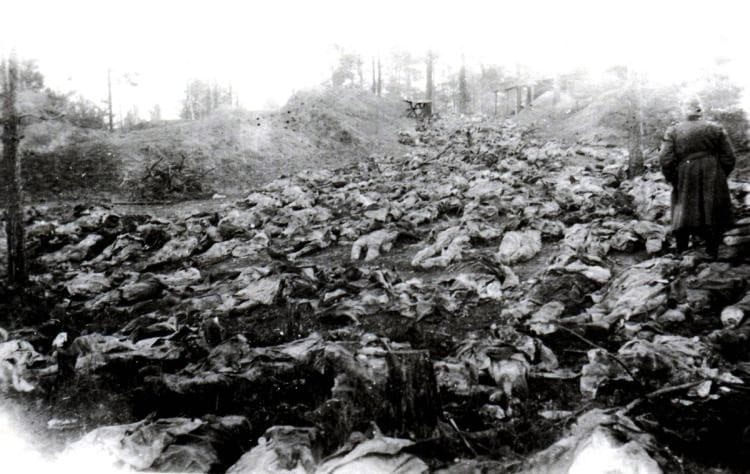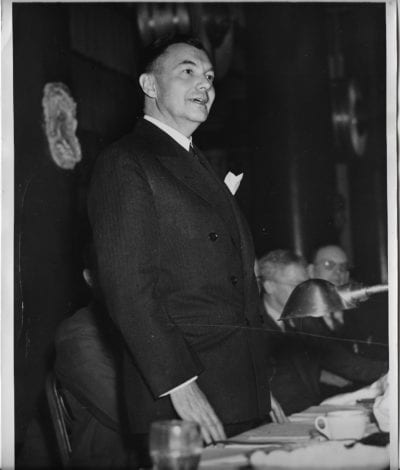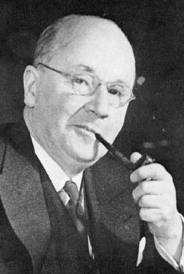The Katyn massacre was a series of mass executions of Polish nationals carried out by the People’s Commissariat for Internal Affairs (NKVD), the Soviet secret police. The massacre was prompted by NKVD chief Lavrentiy Beria’s proposal to execute all captive members of the Polish Officer Corps, dated 5 March 1940, approved by the Soviet Politburo, including its leader, Joseph Stalin. The number of victims is estimated at about 22,000. The victims were executed in the Katyn Forest in Russia, the Kalinin and Kharkiv prisons, and elsewhere. Of the total killed, about 8,000 were officers taken prisoner during the 1939 Soviet invasion of Poland, another 6,000 were police officers, and the rest were arrested Polish intelligentsia that the Soviets deemed to be “intelligence agents, gendarmes, landowners, saboteurs, factory owners, lawyers, officials and priests”.
In May 1943, the Germans, anxious to drive a wedge between the Soviet Union and its Western allies, took several American and British POWs to the Katyn Forest in western Russia to show them horrific evidence of a massacre. The prisoners were shocked at the thousands upon thousands of corpses in advanced stages of decay, clothed in Polish military officers’ uniforms and crammed into enormous mass graves.
When the London-based Polish government-in-exile asked for an investigation by the International Red Cross, Stalin immediately severed diplomatic relations with it. The USSR claimed that the victims had been murdered by the Nazis in 1941, and continued to deny responsibility for the massacres until 1990, when it officially acknowledged and condemned the perpetration of the killings by the NKVD, as well as the subsequent cover-up by the Soviet government.
An investigation conducted by the Prosecutor General’s Office of the Soviet Union (1990–1991) and the Russian Federation (1991–2004) confirmed Soviet responsibility for the massacres, but refused to classify this action as a war crime or an act of genocide. The investigation was closed on the grounds that the perpetrators of the atrocity were already dead, and since the Russian government would not classify the dead as victims of Stalinist repression, formal posthumous rehabilitation was deemed inapplicable.
The two Americans, Capt. Donald B. Stewart and Lt. Col. John H. Van Vliet Jr., were reluctant to believe that their Soviet allies could have been responsible for such an atrocity, but the evidence was unimpeachable: The bodies had been dead for many months, in an area the Germans had only recently occupied. These were not victims of the Nazis.
The dead in Katyn Forest were Polish officers, 22,000 in all, who represented not only the flower of the Polish military but of Polish society as well. Stalin’s minions had executed them all, in one of the worst single episodes of mass execution in the blood-soaked 20th Century, in order to destroy any Polish capacity for resisting a Russian occupation.
The Katyn Massacre aroused strong controversy after the war, with Poles and many in Congress accusing the Roosevelt administration of covering up Soviet involvement in the grisly deed. Hearings were held, and a congressional committee eventually determined, in 1952, that Stalin’s Soviet Union had indeed been responsible, and that the Roosevelt administration had tried to cover up the episode out of military necessity. The Soviet Union under Gorbachev finally admitted responsibility for Katyn, but the White House has never acknowledged any inside knowledge or attempt to cover up the event.
Now, the verdict is in. With the September 10 release of 1,000 pages of formerly classified documents by the National Archives, it has been established beyond any reasonable doubt that the Roosevelt administration knew of the atrocity perpetrated by “Uncle Joe” Stalin long before the war was over, and made sure the American public did not find out about it.
It turns out that the Germans had correctly taken the measure of their Allied captives. Both Stewart and Van Vliet were soon convinced that the Soviets were responsible, and managed to send coded communiques to Washington while still in German captivity. There is no doubt that Roosevelt knew about Katyn and about who was responsible but, anxious not to tarnish the Soviets’ image, made sure it was kept secret until after the war.
Even then, elements within the U.S. Government wanted to keep Katyn a secret, as evidenced by the mysterious disappearance of a report Van Vliet wrote in 1945 about Katyn.
The newly released paper trail is damning evidence of wartime (and Cold Wartime) realpolitik at its worst. One 1950 statement from Stewart confirms that both he and Van Vliet had sent coded messages to Washington expressing the view that the Nazis were telling the truth about Katyn. Another, from head of Army intelligence Clayton Bissell, states unequivocally that the United States had requested information, via coded message, from Stewart and Van Vliet concerning what they had been shown in Katyn, and that both men had duly responded.
But the most explosive evidence (so far) shows that the U.S. Government ordered Stewart in 1950 never to speak about the coded communications in 1943. No mention of them ever cropped up in the report that resulted from the two-year congressional investigation in 1951-1952; the information was apparently suppressed by the White House and the military.
What was the result of the Katyn cover-up? According to Randy Herschaft and Vanessa Gera of the Associated Press, the Cold War, in all its apocalyptic contours:
Allen Paul, author of “Katyn: Stalin’s Massacre and the Triumph of Truth,” told the AP the find is “potentially explosive.”… He argues that the U.S. cover-up delayed a full understanding in the United States of the true nature of Stalinism — an understanding that came only later, after the Soviets exploded an atomic bomb in 1949 and after Poland and the rest of Eastern Europe were already behind the Iron Curtain.
“The Poles had known long before the war ended what Stalin’s true intentions were,” Paul said. “The West’s refusal to hear them out on the Katyn issue was a crushing blow that made their fate worse.”
In other words, the Katyn cover-up achieved for the Soviet Union what the equally dastardly cover-up of the murder of American missionary-turned-soldier John Birch by Chinese Communists accomplished for Mao’s Red China: the deliberate concealment of the murderous nature of communist governments from the American people and from many in Congress, allowing totalitarian regimes in the USSR and China to solidify their hold on power without protest from American citizens or their elected leaders. The Katyn cover-up gave Stalin’s Soviet Union camouflage for what came after the war: Soviet hegemony in Eastern Europe, expansion into Africa and Cuba, the Soviet procurement of nuclear and missile technology, the Cuban Missile Crisis, and all the other defining events of the Cold War.
While the Cold War might have taken place even without the cover-up of the butchery at Katyn Forest, it is doubtful that Soviet propaganda could have so successfully beguiled so many Americans into believing in the essential benevolence of Soviet communism.
In April 2010, the Polish president, and many other politicians and high ranking officers were killed in a false flag ‘accident’ that occurred when the airplane these men and women were flying in mysteriously crashed on its way to attend a 70th anniversary memorial for the victims of the Katyn massacre. In November 2010, the Russian State Duma approved a declaration blaming Stalin and other Soviet officials for having personally ordered the massacre.
Former Ambassador to Poland, Arthur Bliss Lane is interviewed in 1952 regarding the Katyn Massacre (video = 14:35):
Read Also:



